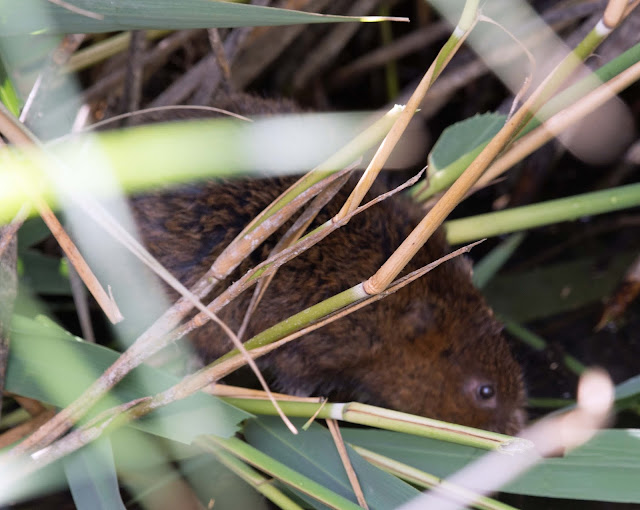Mid-morning walk in the hope of photographing some invertebrates. Annoyingly it was overcast with light drizzle to start with. It did dry up and the sun shone briefly while the temperature rose a little. I did manage a few images.
 |
| Anthophora bimaculata the green eyed flower bee |
Our smallest Anthophora with a frenetic character, bright green eyes and a high-pitched, hovering flight that often attracts attention. It is one of two smaller, banded Anthophora species. Females can be separated from females of the other species (A. quadrimaculata) by the more conspicuous hair bands of the abdomen and the partially-yellow face with two large black marks below the antennae (face all-black in female quadrimaculata). Males have a yellow face and lack the pair of large black marks below the antennae found in male quadrimaculata. Like the female, they also have conspicuous and intense abdominal bands. A. bimaculata is a southern species associated with very sandy habitats such as heathland, coastal dunes, soft-rock cliffs, sandpits and sandy brownfield sites. Most records are south of the Severn-Wash line but a few sites occur in Worcestershire and Gloucestershire.
Nesting occurs in sandy ground, both flat areas and sand faces. Colonies can be large and conspicuous, especially on warm, sunny days when the bees emit their high-pitched hum. The cuckoo-bee Coelioxys rufescens can sometimes be recorded around nesting colonies or on flowers nearby. Adults fly from June until September and visit a wide variety of flowers, including brambles, lamiates like Black Horehound, Viper's Bugloss and Asteraceae like Cat's-ear and ragworts.
 |
| Anthophora bimaculata the green eyed flower bee |
 |
| female Common Blue Damselfly |
 |
| female Common Blue Damselfly |
 |
| One of eight young Egyptian Geese |
 |
| Hoverfly Eupeodes sp male |
 |
| Helophilus pendulus male |
The hoverfly Helophilus pendulus is a common find, particularly around water or damp habitats. The black stripes on the thorax give it the common name 'The Footballer'. However, there are other hoverflies in the genus all with a stripy thorax.
 |
| Not sure on the ID of this bee |
 |
| Poecilobothrus nobilitatus |
This is an attractive fly with a lime green thorax. The male has conspicuous white wing tips and is easy to identify. The hairs on top of the thorax are in two neat rows.
It lives in damp places with lush vegetation and is often seen resting on mud or on the water surface. And can be seen May to August. A mating dance precedes copulation.
Quite common and widespread in England and Wales, fewer records from Scotland.
 |
| female Thick-thighed Beetle - Oedemera nobilis |
 |
| Volucella zonaria male |
























































